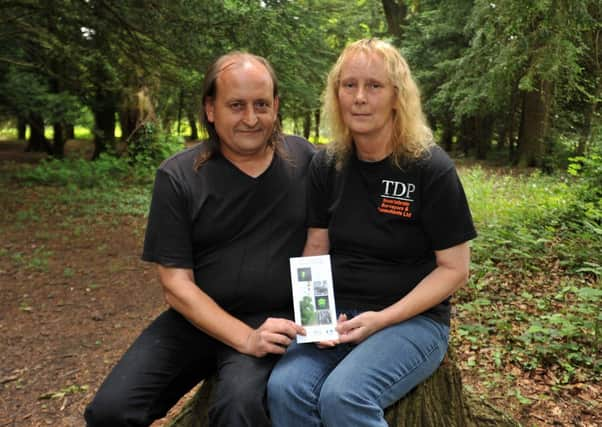Beetles could be glowing, glowing gone


If not then now would be a good time to go looking.
A survey of glow worms in Notts is being carried out this summer and everyone is invited to take part.
It’s been organised by Trevor and Dilys Pendleton, who are self-employed invertebrate surveyors and consultants, with support from the Wildlife Trust and RSPB.
Advertisement
Hide AdAdvertisement
Hide AdTrevor, 50, said: “Glow worms seem to be in decline so we want to get an idea of numbers.”
“There hasn’t been a Notts survey before but we know that glow worms aren’t as much in evidence as they used to be.”
Trevor said the reason for decline was probably because of a loss of their natural environment.
“They are usually found in grassy areas like roadside verges, but a lot of them have disappeared now. “
Advertisement
Hide AdAdvertisement
Hide Ad“Commercial forestry hasn’t helped either. We think agricultural chemicals might have had an effect as well.”
Despite their name, glow worms are actually a type of beetle.
The females glow to attract a male for mating. She lays between 50 and 100 eggs and will push them into the soil to protect them.
Trevor and Dilys, of Day Street, Market Warsop, are so dedicated to the glow worm survey that they go out every night to search for them.
Advertisement
Hide AdAdvertisement
Hide AdThey also collect some of the insects to record the stages they go through from larval and pupal stage, to adult.
Dilys, 54, said: “We put them back into the wild after we have studied them.”
“We know certain areas where they can be seen, like in Clumber Park and the Clipstone quarter of Sherwood Forest.”
Trevor said the glow can be seen from dusk. It is a form of bioluminescence - the emitting of light by a living organism - caused by a chemical reaction.
Advertisement
Hide AdAdvertisement
Hide Ad“It’s fascinating to learn about them, and to get other people interested in them,” he said.
“Familes can take part in the survey, we find children are really interested in insects when we take them out on guided walks through Sherwood Forest.”
The larval stage of the glow worm lasts between one and three years, during which they eat slugs and snails.
Trevor said: “The glow worm climbs onto the snail, waits until the snail puts its held out of the shell and then injects it with poison.”
“Once they are adults, glow worms don’t eat.“
Advertisement
Hide AdAdvertisement
Hide Ad“The male has wings and looks more like a typical beetle. He also has big eyes and can see the glow from the female from an incredible distance.”
No special equipment is needed to take part in the survey. It is better not to use a torch so that the glow can be seen.
For those who don’t want to go out at night, larvae can be seen during the day.
Trevor said they wanted to record negative results as well as positive sightings.
To find out more go to www.eakringbirds.com.